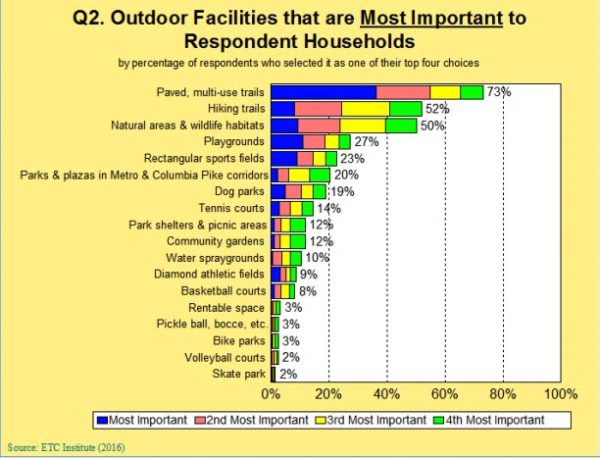 Peter’s Take is a weekly opinion column. The views and opinions expressed in this column are those of the author and do not necessarily reflect the views of ARLnow.com.
Peter’s Take is a weekly opinion column. The views and opinions expressed in this column are those of the author and do not necessarily reflect the views of ARLnow.com.
In a November 8 column, I discussed some serious flaws in Arlington County’s latest draft of its proposed Public Spaces Master Plan (PSMP) or POPS plan. That column discussed errors in the quantitative estimates of present and future demand for sports fields prepared by the staff of the Department of Parks and Recreation (DPR).
Today’s column identifies additional weaknesses in the latest PSMP/POPS draft.
Impact of Amazon’s Arlington Headquarters
On November 13, Arlington County announced the new Amazon HQ2 facility to be located in Crystal City. In welcoming Amazon, Congressman Don Beyer also expressed caution:
“We all know that success presents its own challenges:
- Ensuring that the quality of life — parks and open spaces, safe neighborhoods, well-educated children — keeps pace with rising wealth.”
Amazon’s arrival underscores the urgency of correcting the PSMP draft’s substantive flaws to ensure the most efficient and effective possible use of Arlington’s limited land and financial resources.
Statistically valid evidence of community priorities omitted
A 2016 public survey’s statistically valid results appear to have been omitted from this PSMP draft. These data were used to produce Fig. 17 in a previous PSMP draft. Fig. 17 displayed the respondents’ top priority investments for outdoor spaces and public parks, with the overwhelming majority of residents choosing hiking trails, natural areas & wildlife habitats, and paved multiuse trails as their highest priorities.
As documented in the survey graphic below, Arlington residents are not prioritizing the continuing development of public parkland with lots of expensive “amenities.” But, Arlington County’s DPR staff is pushing for expensive, new outdoor infrastructure that will deplete our constrained financial resources.
DPR’s spending priorities conflict with Arlington residents’ priorities.
Virtually no new funding for open space acquisition
The latest PSMP draft calls for acquiring 30 more acres of park/open space. Unfortunately, this is an empty promise. The Capital Improvement Plan (CIP) adopted by the County Board in July 2018 contains NO new park/open space acquisition funding for the next 10 years:
“With no new funding scheduled from bond funds over the next ten years, the Program will focus on utilizing remaining Bond and PAYG balances (approximately $3.5 M) to fund high priority opportunities that arise.” Adopted FY2019-FY2028 CIP, p. C-51.
(Note: Roughly half of this $3.5 million is earmarked to purchase the WETA building in the Four Mile Run Valley, where County staff intends to create an “arts district.”)
With little to no new park/open space acquisition in the foreseeable future, it becomes imperative for us to preserve, not pave over, the limited natural space we still have.
Conclusion
Because the POPS plan guides all Arlington park and recreational planning decisions for the next 20 years, we must get it right.
The latest PSMP draft should be amended to
- reinsert the 2016 statistically valid needs survey data showing community priorities for investments in parks and recreational facilities,
- use these survey data to set priorities,
- acknowledge the lack of funding for the next decade to acquire new open spaces, and
- place a greater emphasis on sustainability–including the preservation and restoration of existing parkland and natural spaces by reducing existing facilities’ footprints, by trimming nonpriority new facilities, and by converting dedicated fields and sport courts into multiuse facilities that serve the greatest number of people and needs.





-600x600.jpg)

